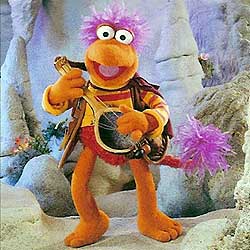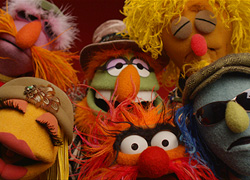Someone told me today that they believed the death was caused by pneumonia.
WHAT? I didn't think they could get pneumonia, but whatever.
http://search.cnn.com/cnn/search?source=cnn&invocationType=search/bottom&sites=cnn&query=keiko
**************
Then I found this; it WAS pneumonia:
**************
'Free Willy' whale Keiko dies
Saturday, December 13, 2003 Posted: 7:40 PM EST (0040 GMT)
www.cnn.com
Keiko starred in three movies. OSLO, Norway (AP) -- Keiko, the killer whale made famous by the "Free Willy" movies, has died in the Norwegian fjord that he made his home after a multimillion dollar campaign failed to coax him back to the open seas.
The whale, who was 27, died Friday afternoon after the sudden onset of pneumonia in Taknes Bay, 370 miles northwest of the capital, Oslo. He was old for an orca in captivity, though wild orca live an average of 35 years.
David Phillips, executive director of the San Francisco-based Free Willy-Keiko Foundation, said Keiko had been in good health but started showed signs of lethargy and loss of appetite on Thursday.
"This is a long sad day for us," Phillips said.
Keiko was led to the remote Norwegian bay last year after he turned up in Norway, to the delight of local residents but the disappointment of his trainers who had hoped he would return to the wild after years in captivity.
One of his handlers, Dale Richards, also said Keiko died quickly. "We checked his respiration rate and it was a little irregular ... he wasn't doing too well," Richards told The Associated Press. "Early in the evening, he passed away."
Keiko -- which means "Lucky One" in Japanese -- was captured in Iceland in 1979 and sold to the marine park industry.
Starting in 1993, the six-ton mammal starred in three "Free Willy" movies, a heartwarming box-office franchise from Warner Brothers in which sympathetic humans help set a long-captive killer whale free.
The drive for the real-life reintroduction of the movies' star started after he was found ailing in a Mexico City aquarium. The project -- to reintegrate Keiko with a pod of wild killer whales -- cost millions of dollars and stirred interest and ire worldwide.
Keiko was rehabilitated at the Oregon Coast Aquarium, then airlifted to Iceland in 1998. His handlers there prepared him for the wild, teaching him to catch live fish.
Keiko was released from Iceland in July 2002, but he swam straight for Norway on a 870-mile trek that seemed to be a search for human companionship.
He first turned up near the village of Halsa in late August or early September of 2002. There, he allowed fans to pet and play with him, even crawl on his back, becoming such an attraction that animal protection authorities imposed a ban on approaching him.
Keiko was later led to Taknes Bay, a clear, calm pocket of coastal water deep enough that it doesn't freeze in winter. Keepers fed him there, but he was free to roam and did, often at night.
He was equipped with a VHF tracking device that let his four handlers pinpoint his location provided he stayed within a range of about five miles.
Keiko's keepers said the whale seemed to adapt to living in the wild despite so many years in captivity, learning to slap his tail and do jumps called side breaches that are typically done to stun fish.
To keep Keiko in shape, his caretakers took him on "walks," leading him around the fjords from a small boat at least three times a week.
Nick Braden, a spokesman of the Humane Society of the United States, said veterinarians gave Keiko antibiotics after he showed signs of lethargy Thursday, but it wasn't apparent how sick he was.
"They really do die quickly and there was nothing we could do," said he said.
Braden said "it's a really sad moment for us, but we do believe we gave him a chance to be in the wild."
 I wonder how long killer whales normally live. They said they kept trying to release him and he kept coming back. I always thought "Free Willy" was a great movie. Ah, well. I'm a sucker for animals.
I wonder how long killer whales normally live. They said they kept trying to release him and he kept coming back. I always thought "Free Willy" was a great movie. Ah, well. I'm a sucker for animals. I wonder how long killer whales normally live. They said they kept trying to release him and he kept coming back. I always thought "Free Willy" was a great movie. Ah, well. I'm a sucker for animals.
I wonder how long killer whales normally live. They said they kept trying to release him and he kept coming back. I always thought "Free Willy" was a great movie. Ah, well. I'm a sucker for animals.
 Welcome to the Muppet Central Forum!
Welcome to the Muppet Central Forum! Back to the Rock Season 2
Back to the Rock Season 2 Sesame Street Season 54
Sesame Street Season 54 The Muppets Mayhem premieres
The Muppets Mayhem premieres Bear arrives on Disney+
Bear arrives on Disney+ Sam and Friends Book
Sam and Friends Book
